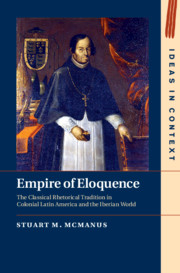 Empire of Eloquence
Empire of Eloquence Book contents
- Empire of Eloquence
- Ideas in Context
- Empire of Eloquence
- Copyright page
- Dedication
- Contents
- Figures
- Acknowledgments
- Abbreviations
- Introduction
- Chapter 1 The Foundations of the Empire of Eloquence
- Chapter 2 Philip IV’s Global Empire of Eloquence
- Chapter 3 A Japanese Cicero Redivivus
- Chapter 4 Indo-Humanist Eloquence
- Chapter 5 Centers, Peripheries and Identities in the Empire of Eloquence
- Chapter 6 The Republic of Eloquence
- Bibliography
- Index
Chapter 3 - A Japanese Cicero Redivivus
Published online by Cambridge University Press: 09 April 2021
- Empire of Eloquence
- Ideas in Context
- Empire of Eloquence
- Copyright page
- Dedication
- Contents
- Figures
- Acknowledgments
- Abbreviations
- Introduction
- Chapter 1 The Foundations of the Empire of Eloquence
- Chapter 2 Philip IV’s Global Empire of Eloquence
- Chapter 3 A Japanese Cicero Redivivus
- Chapter 4 Indo-Humanist Eloquence
- Chapter 5 Centers, Peripheries and Identities in the Empire of Eloquence
- Chapter 6 The Republic of Eloquence
- Bibliography
- Index
Summary
Chapter 3 argues that the classical rhetorical tradition was a powerful tool for both European and non-European Jesuit missionaries seeking to advance the cause of Iberianized Catholicism. To do so, it places the Jesuit spiritual conquest of the Americas within the context of the Society of Jesus’ parallel efforts in Asia. More precisely, it follows the career of a Japanese Jesuit, Hara Martinho (c. 1568–1629), from his early education in the Jesuit college at Arima in Japan, to his participation in the Tenshō Embassy to Rome and finally to the crowning achievement of his humanist career, the delivery of his Latin panegyric oration to his fellow Jesuit students at Goa. While no Jesuit sermons in Japanese survive, there are several surviving Chinese sermons, which reveal that the classical rhetorical tradition could influence public speaking in East Asian languages. When taken as a whole, the case of this Japanese Cicero shows that the classical rhetorical tradition in its Renaissance humanist garb was a valuable weapon for Jesuit missionaries seeking to expand the boundaries of Catholicism in a much more militaristic way than most recent scholarship suggests.
- Type
- Chapter
- Information
- Empire of EloquenceThe Classical Rhetorical Tradition in Colonial Latin America and the Iberian World, pp. 112 - 154Publisher: Cambridge University PressPrint publication year: 2021
